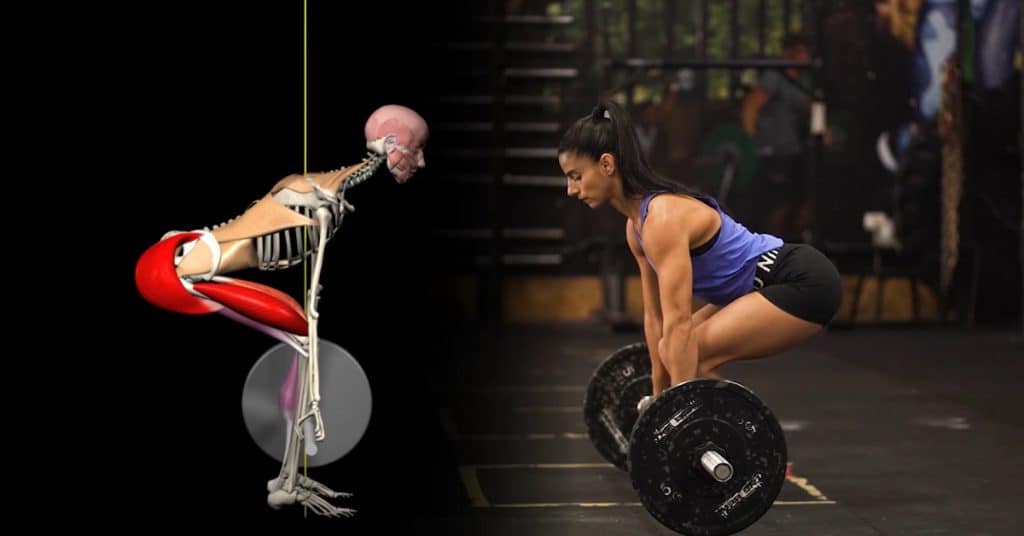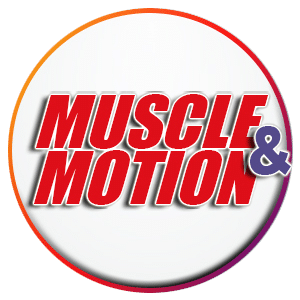Whether you’re just getting started at the gym or have been working out for a while, proper deadlift technique should be an essential part of your workout routine. From traditional deadlifts to single-leg variations, there are plenty of ways to incorporate this exercise into your workout.
This Ultimate Guide to Proper Deadlift Technique by Muscle and Motion will give you all the information you need to start deadlifting safely and effectively!

What are the advantages of deadlifts?
When people think of deadlifts, they often think of weightlifters who lift heavy weights at the gym. In reality, we all need to do some form of deadlifting throughout the day, whether picking up groceries, moving household items, and even picking up our kids. Deadlifts are a part of our everyday lives!
Deadlifts are an essential exercise for people of all ages, providing a wide range of benefits. Strengthening the muscles in your lower body helps improve overall health and increase bone mineral density. Also, deadlifts are incredibly functional, targeting your entire posterior chain muscles and aiding with grip strength.
Which muscles are activated during deadlifts?
The deadlift is an effective compound exercise that engages multiple muscle groups and joints at the same time. It is a great way to build strength and save time during your workout, as it targets a more significant number of muscles than isolation exercises such as calf raises, leg extensions, and biceps curls.
The deadlift can be divided into two stages, each utilizing different muscle groups.
- The first stage: lifting the weight from the ground to knee level. This is done mainly through knee extension. The trunk remains in a forward-leaning position. The dynamic knee extension targets your quadriceps femoris, while the glutes and hamstrings primarily function as stabilizers.
- The second stage: is a full extension of the hip and the knee until the body is fully straightened. The gluteus maximus is the primary muscle targeted in this stage, with the hamstrings assisting in hip extension. In addition, the entire posterior chain muscles are also active to stabilize the spine and scapulae. The abdominal muscles work together to help stabilize the trunk while performing deadlifts. The heavier your deadlifts are, the stronger and more developed these muscles become.
How to deadlift properly: step-by-step
- Start by standing with a barbell placed on the ground in front of you, and your feet about shoulder-width apart.
- Hinge forward at your hips, slightly bending the knees, and keep the core muscles activated and the back straight.
- Grab the barbell with your hands and keep it close to your shins by tightening your latissimus dorsi.
- Brace your core and use your legs to push your feet into the ground. Lift the weight up while extending your hips and knees until you are standing up straight. Keep your arms straight throughout the movement.
- Slowly bend your knees and hips from a standing position while lowering the weight until you are back in the starting position.
- Repeat for the required number of repetitions.
How do I know if I’m deadlifting correctly?
To ensure you have the proper deadlift technique, you should first master the hip hinge. The hip hinge is one of the most essential exercises for trainees to learn before starting deadlifts. You only need a wall and a dowel rod to learn the hip hinge exercise. The rod placed on the back helps to illustrate the importance of maintaining a straight back. Throughout the exercise, keep the back in a neutral position. In other words – even when bending down, keep the same back position as when standing erect!
How to hip hinge: step-by-step
- Start by standing a foot’s length from the wall with the dowel touching the body at three points: head, thoracic spine, and sacrum.
- Touch the wall with your buttocks and hinge forward through your hips.
- Ensure the dowel always remains in contact with the three points.
How to grip the bar when deadlifting
If you have no issues gripping the bar when deadlifting, there is no need to make any changes. However, if your grip limits the amount of weight you can lift, you may want to try a different grip and see if it helps you lift more. Here are two types of grips you can start implementing today:
- Overhand grip
The overhand grip is a pronated grip with both palms facing you. One of the benefits of an overhand grip is that it allows you to easily keep the bar close to your body.
- Mixed grip
The mixed grip features one hand in a pronated position and the other in a supinated position—in other words, one palm faces you, and the other faces away. This grip generally allows people to lift more weight. However, the mixed deadlift grip creates a higher potential for injuries such as biceps tendon tears.
How to brace when deadlifting
Deadlifting is essential for developing strength and muscle and should be performed correctly for maximum benefit. Bracing your core helps create a stable foundation for the movement and also helps to keep your torso upright and straight during the lift, which eventually helps you to lift heavier weights. Bracing involves tightening all the muscles around the abdomen, including the erector spine and the pelvic floor muscles. If you want to learn more about bracing and how to do it correctly, watch this video for more information.
Six deadlift variations to add to your workouts today!
If you’re looking to add variety to your deadlift workouts and break away from the classic Deadlift, here are some different deadlift variations you can use to target other muscle groups.
Click the exercise name and try our Fitness App for effective and safe practice. We’ve unlocked it just for you!
The Banded Deadlift is performed with a resistance band attached to the barbell.
As you lift the weight, the band’s tension increases, requiring you to generate more power than you ordinarily would to lock out the barbell. This additional challenge adds an extra layer of difficulty to the exercise.
In the Double Kettlebell Deadlift, two kettlebells are used instead of an Olympic Bar, providing a more functional exercise than traditional deadlifts as it more accurately replicates lifting two items, each in one hand (such as grocery bags).
This type of exercise places your wrists in a mid-position, which can be helpful for people who experience discomfort in their wrists when performing a regular deadlift with a supination or pronation grip.
The Sumo Deadlift is a controversial exercise. Many argue that it provides an unfair advantage because you can lift more weight off the ground than with a regular deadlift, as the finishing point is lower.
Regardless, thanks to the broader stance used in this exercise, you can focus on working the hip adductor muscles more effectively.
The Romanian Deadlift, or RDL, starts in a standing position, with the bar on the thighs, unlike the classic deadlift, which begins with the bar on the floor (dead-stop). In this exercise, most movement comes from your hips and not your knees. This emphasizes strengthening your hamstrings and glutes more than your quads.
The Stiff Single-leg Deadlift with Kettlebell in the Opposite Arm is an asymmetrical exercise to strengthen the posterior chain and core muscles. This exercise is similar to the Romanian Deadlift, except that it is performed while balancing on one leg. This exercise targets the hip abductor muscles, which help to stabilize the pelvis and maintain balance while standing on one leg. These muscles prevent your pelvis from dropping as your weight shifts from one side to the other.
The Trap Bar Deadlift is an excellent exercise to target the glutes, hamstrings, and back. It is an ideal alternative to barbell deadlifts for those with back issues, as it reduces strain on the lower back as the weight is placed in the center of the body rather than in front of it. It is also easier to learn than barbell deadlifts, making it an excellent choice for beginners and experienced lifters.
At Muscle and Motion, we believe that knowledge is power, and understanding the ‘why’ behind any exercise is essential for long-term success.
Let the Strength Training App help you achieve your goals! Download now and sign up for free.
Written by Uriah Turkel, Physical Therapist and Content Creator at Muscle and Motion.


